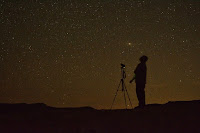Introduction and Monthly Reminders
June has been another great month for stargazing. Utah has experienced a few afternoon thunderstorms, which I absolutely love, but they do interfere with astronomy. For those interested in photography, these evening thunderstorms have created a great opportunity to capture images of lightning. Lightning images are mostly down to luck, so keep trying if you are interested!
The first couple of weeks of June offered observers the chance to view Mars as it passed through the Beehive Cluster, the Full Moon, the greatest eastern elongation of Venus, and several close approaches between the Moon and the planets. The remainder of the month will bring the Summer Solstice, the New Moon, and several more close approaches between the Moon and the planets. An observer can also still view the many Messier objects that have been discussed so far. This post will highlight the remaining six Messier objects belonging to Virgo.
Messier Targets 🔭
Remember that Messier objects can be viewed throughout the year. To see which objects can be viewed during this time of year, please check out my Messier List file to aid in the hunt for these wonders of the night sky. Don't forget that there are tabs at the bottom of this spreadsheet to easily find objects according to Season, Constellation, Magnitude, and Classification.
This post will highlight the remaining Messier objects that can be found in Virgo, which will conclude the entire Messier catalog. Near the end of this post, I will include a couple of images that show the location of all of the Messier objects in Virgo. The six remaining Messier objects are a little more spread out than the objects discussed in the June Night Sky Report. Below are two images that show what the night sky will look like as an observer faces south after sunset.
 |
| View of the night sky as an observer faces south after sunset. |
 |
| View of the night sky as an observer faces south after sunset with constellation lines and labels and referenced stars labeled. |
I ended the last post with Messier object M90, a short distance from the bright star Vindemiatrix. The below image is intended to refresh your memory of the location of M90 and where Vindemiatrix is located.
With a slight telescope hop to the right of M90, an observer can find M87 (aka NGC 4486) a supergiant elliptical galaxy that contains several trillion stars. M87 is one of the largest known galaxies in our local neighborhood. See the image below for the location of M87.
By taking another small hop to the right with a telescope, an observer can find M86 (aka NGC 4406) another elliptical galaxy. M86 glows at 8.88 magnitudes and can be found in a cluster of galaxies in this region of the sky. See the image below for the location of M86.
An observer using a low-power, wide field-of-view eyepiece to view M86 will likely see M84 (aka NGC 4374), another elliptical galaxy, in the same field of view. This Messier object can be found to the lower right of M86. See the image below for the location of M84.
 |
| Location of M84 in Virgo. |
We will now guide our telescope down from M84, towards the bright star Porrima in Virgo. M49 (aka NGC 4472), an elliptical galaxy about 56 million light-years away, will pop into view. This object is very dim at magnitude 12.13 and will require a larger telescope and a dark sky to view. See the image below for the location of M49.
 |
| Location of M49 in Virgo. |
After viewing M49, we will guide our telescope farther downward and to the right to find M61 (aka NGC 4303) a spiral galaxy. The bright stars Spica and Porrima can be used to form a line with M61 to help locate this Messier object. M61 shines at magnitude 9.63 so a telescope will provide the best views of this object. See the image below for the location of M61.
All of the Messier objects in Virgo have been found between the stars that represent the upper body of Virgo. The last object is found outside of this area, near her left hand. The bright stars Spica and Porrima represent the left side of Virgo's body. These two stars can be used to find the final Messier object, M104 (aka Sombrero Galaxy, NGC 4594) a spiral galaxy. The Sombrero Galaxy forms a triangle with Spica and Porrima. M104 shines at magnitude 8.00 and can be seen with a large telescope from urban skies or with a pair of binoculars from a dark site. Of course, the best views will come from a large telescope at a dark sky site. See the image below for the location of M104.
 |
| Location of M104 in Virgo. |
The images below show the location of all 11 Messier objects in Virgo. Happy hunting!
 |
| Location of the 11 Messier objects in Virgo. |
 |
| Location of the 11 Messier objects in Virgo with constellation lines and labels and relevant stars labeled. |
This concludes the objects of the Messier Catalog! The above images were provided by Stellarium, a free planetarium software that can be found online, downloaded, or installed as an app on your favorite mobile device. My updated and completed Messier catalog can be found here.




